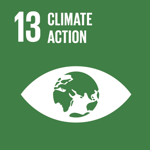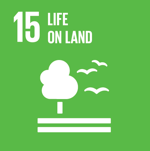The rice mite-fungi-bacteria complex in Central America
 Panama
Panama
 Colombia
Colombia
 Costa Rica
Costa Rica
 Nicaragua
Nicaragua
Executive Summary
Despite its social and nutritional importance and research and development efforts, rice in Central America shows low productivity and can hardly compete with yields achieved in the Southern Cone or North America. If we add phytosanitary threats to the above, the situation becomes more difficult.
In this framework, the mite-fungus-bacteria (CAHB) complex became a threat to the sustainable production of rice in the region. It was first reported in Cuba (1997) where yield losses reached 80%; and later in Haiti, the Dominican Republic, and later in the Central American region, where losses reached 60%. In response to this challenge, a research consortium formed by CIAT (Colombia); the National Rice Corporation (CONARROZ) and Semilla Nuevo Milenio (SENUMISA) (both from Costa Rica), INTA (Nicaragua), and IDIAP (Panama); who agreed on the project “Development of Technologies for the Control of the New Acaro-Fungus-Bacteria Pest Complex Present in Central America and Colombia”. This initiative has contributed to the sustainable production of rice, by increasing yields and quality, reducing production costs, slowing down environmental degradation caused by excessive use of pesticides, and at the same time favoring the profitability and competitiveness of the crop.
The technological solution
The technological solution consisted of a combination of elements enhanced by collaboration between members of the consortium and a constant exchange of experiences and knowledge. The first element materialized from basic laboratory research to diagnose the CAHB mite and bacteria by conventional and molecular methods. This standardized knowledge was shared with all members of the consortium.
The second element facilitated the evaluation and validation of new genetic materials with the potential to show tolerance to the complex or its components. Several of these were registered and released by national programs
The third element based mainly on applied research elucidated strategies and protocols (fertility, planting times and other cultural practices) to minimize the harmful effects of CAHB and the last element, to complement the previous ones, promoted the training and dissemination of the knowledge generated.
Results
The presence of the S. spinki mite and the pathogenic bacterium B. glumae were diagnosed by conventional and molecular methods. Both protocols were standardized by CIAT and transferred through a workshop-course to researchers from the consortium organizations.
- New lines and promising commercial varieties with tolerance to CAHB were evaluated and released, three in the case of IDIAP, which reached 58% of the planted area. INTA Nicaragua registered one (INTA Fortaleza) and Costa Rica three commercial varieties
- Planting times and for chemical control, nutritional demands and optimal levels of N were established to minimize the development of the complex. In essence, the presence of CAHB forced producers to “re-learn” the cultivation of rice.
- Agro technologies were generated and validated under the concept of Integrated Crop Management (MIC), considering factors such as variety, density, fertilization, seed treatment and planting season.
- Capacity building of farmers, technical assistants and MIC specialists was carried by means of technical exchanges, courses, training and participation in workshops and seminars.
Beneficiaries
The technology diffusion component was a central theme of the project. Three regional exchange workshops between specialists were organized as well as field days, seminars and participation in scientific conferences.
The publication of educational materials for producers and technicians was significant. Some subjects allowed the development of undergraduate thesis and one at the doctoral level. Capacity building to conduct standardized conventional and molecular analyzes of B. glumae allowed technicians and specialists to gain new insights. In the case of extension workers, it was possible to train 174 in theoretical courses and 143 in field practices.
Sustainable Development Goals




Participating Organizations
Executor
- Instituto de Innovación Agropecuaria de Panamá (IDIAP) - Panamá
Co-executor
- International Center for Tropical Agriculture (CIAT) - Colombia
- CONNAROZ - Costa Rica
- Instituto Nicaragüense de Tecnología Agropecuaria (INTA) - Nicaragua
- SENUMISA - Costa Rica




